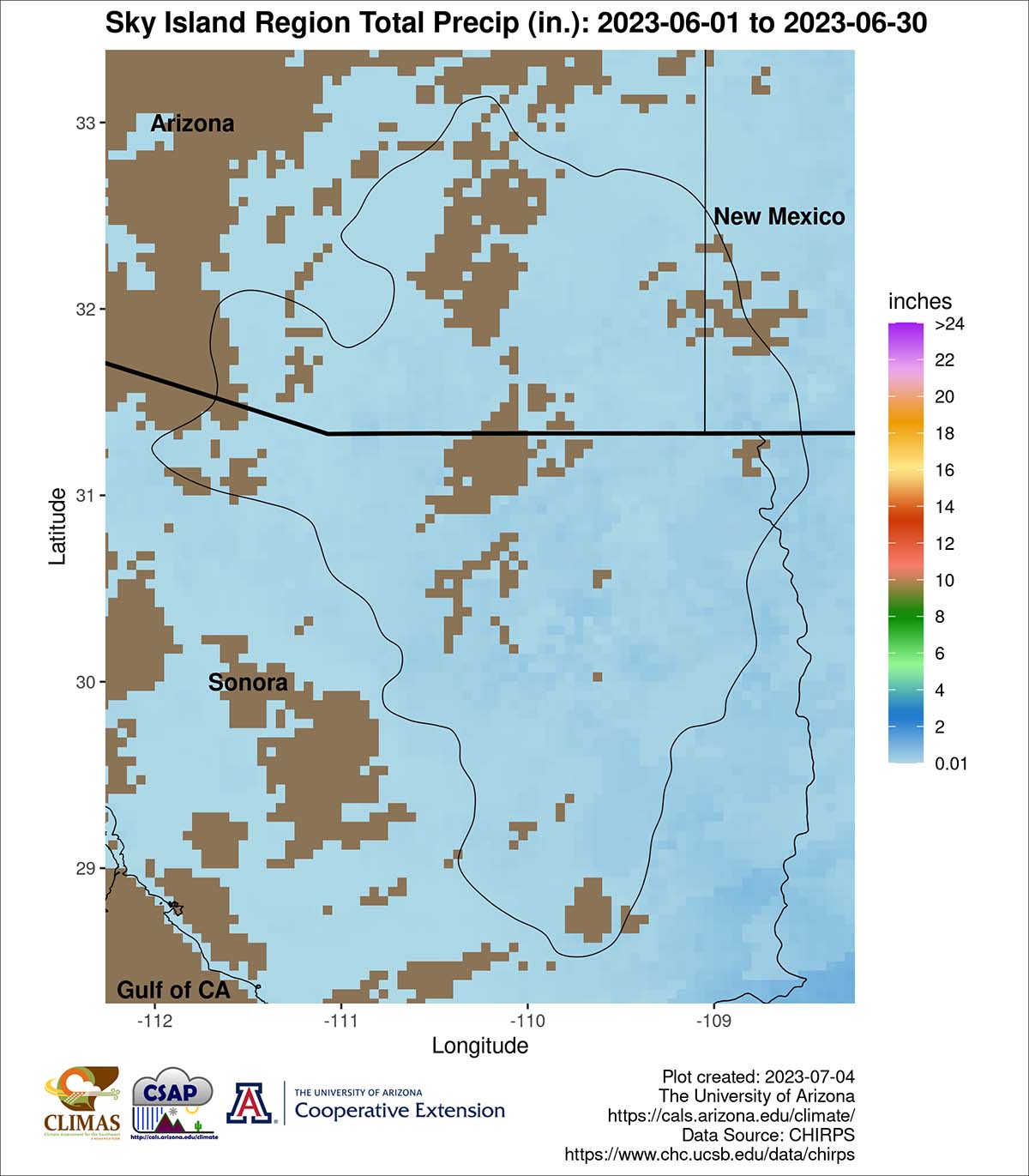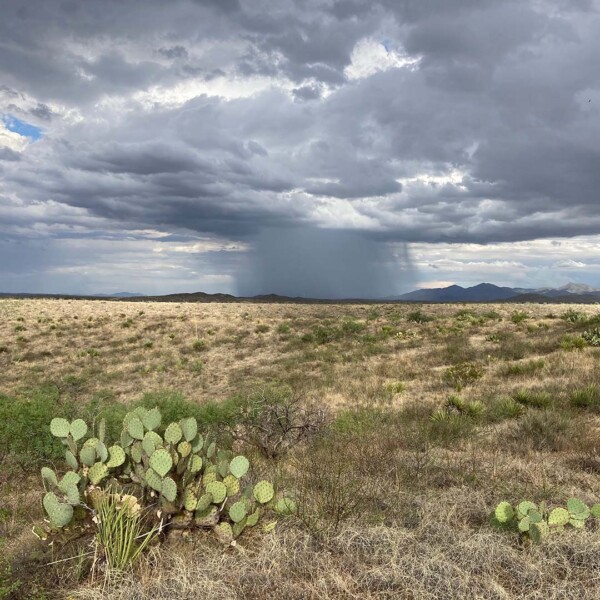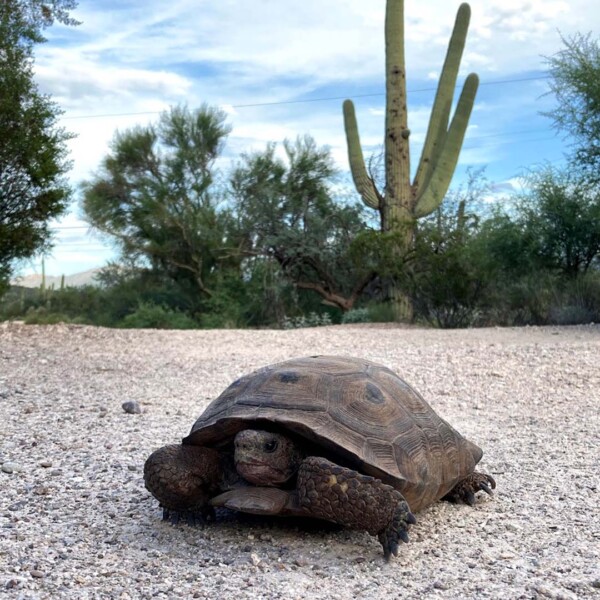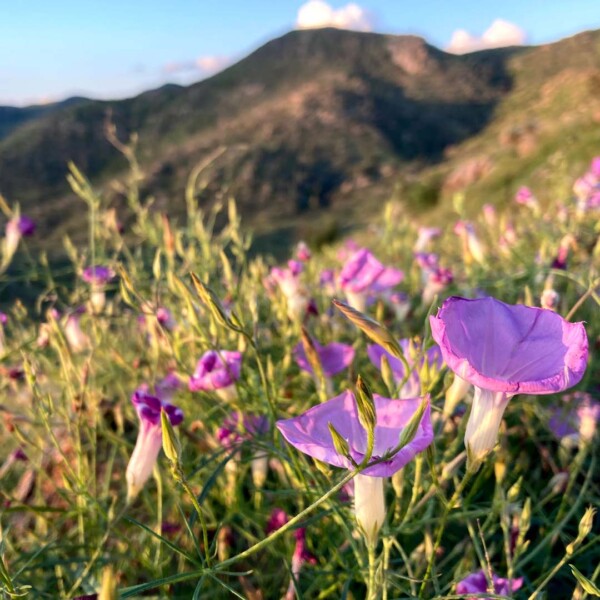 It’s fast approaching our favorite time of year again — when the desert springs to life with the onset of monsoon rains. Although the projections for 2023 are that the monsoon will start late, some scientists believe that late-season tropical storms may help us catch up with overall average rainfall.
It’s fast approaching our favorite time of year again — when the desert springs to life with the onset of monsoon rains. Although the projections for 2023 are that the monsoon will start late, some scientists believe that late-season tropical storms may help us catch up with overall average rainfall.
While we wait for that precious water, staff at Sky Island Alliance and the University of Arizona’s Cooperative Extension have been working on finding a rainfall dataset that spans the entire Sky Island region in the U.S. and Mexico.
In case you’re not familiar, there are a couple main ways to measure rainfall. The simplest is getting readings from rain gauges at specific sites — though this limits results to places that have gauges. And, as we know, the monsoon often falls unevenly in microbursts: It might be raining next door and dry in your own backyard.
The other method is much more sophisticated. Thanks to recent scientific advances, we’re now able to arrive at new “interpolated” rainfall estimates for places in between using data from known rain gauges, as well as other inputs like elevation and satellite observations.
Dr. Mike Crimmins at the UArizona Cooperative Extension did some detective work and uncovered a dataset that has full coverage of the region and updates weekly. The dataset is called CHIRPS and has been around for a few years, but this will be our first season watching to see how well it shows the monsoon as it develops across Sonora and Arizona.
Without further ado, we present to you this monsoon’s Current Total Precipitation map, which will be updated every Monday if you bookmark the link and check back. Right now, the monsoon hasn’t yet arrived. So we’re seeing brown spots (no rain) and light blues (0-2 inches).
And one last treat for all you rainfall nerds out there. If you’re curious how “good” the monsoon has been thus far, check out this Percent of Normal map, which will also update weekly. It shows current rainfall totals as a percent of what each location gets on average.
Watch out for flooding and lightning, of course. But otherwise, we hope you’re able to get out and enjoy the Sky Islands this rainy season!



